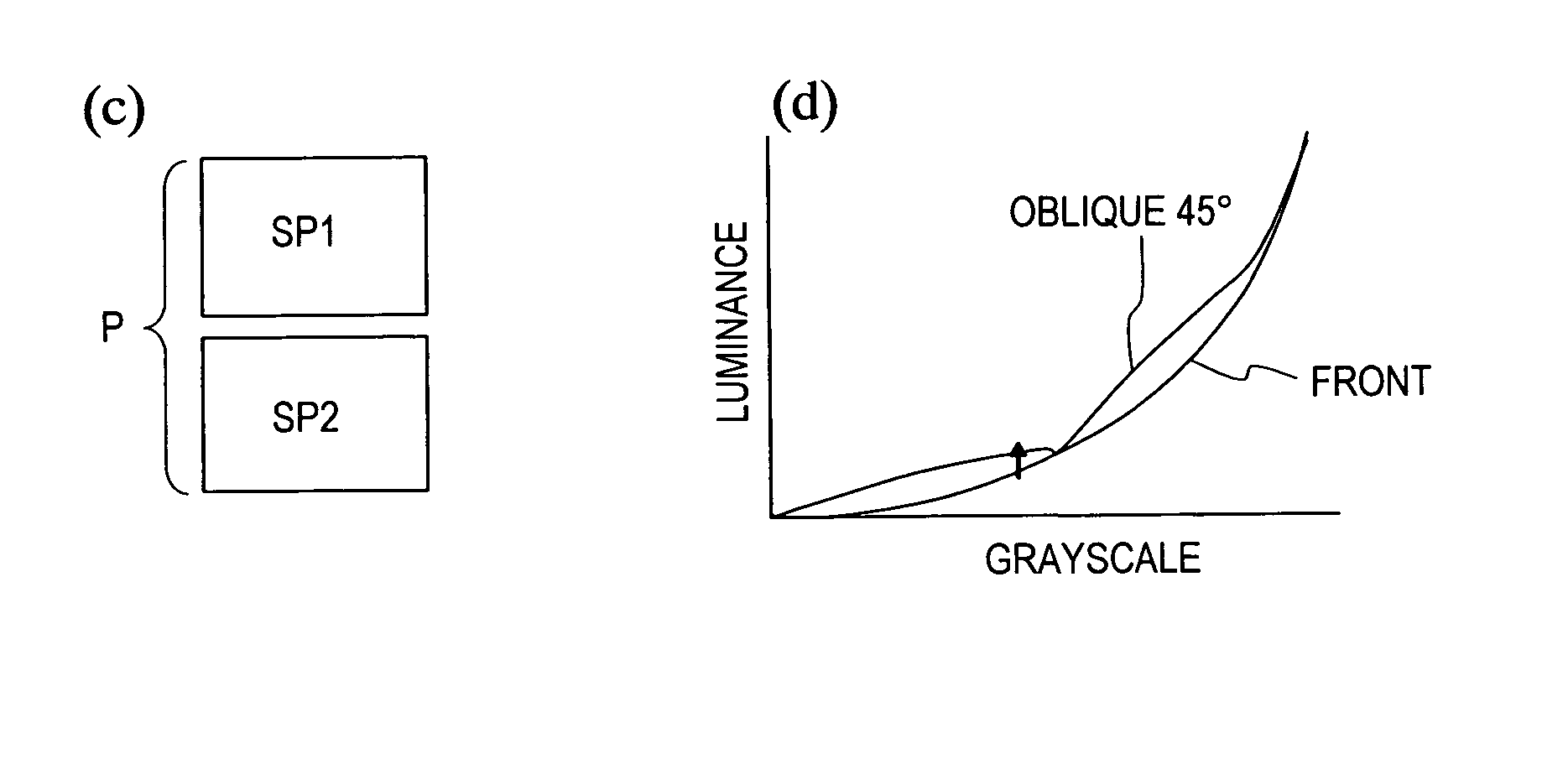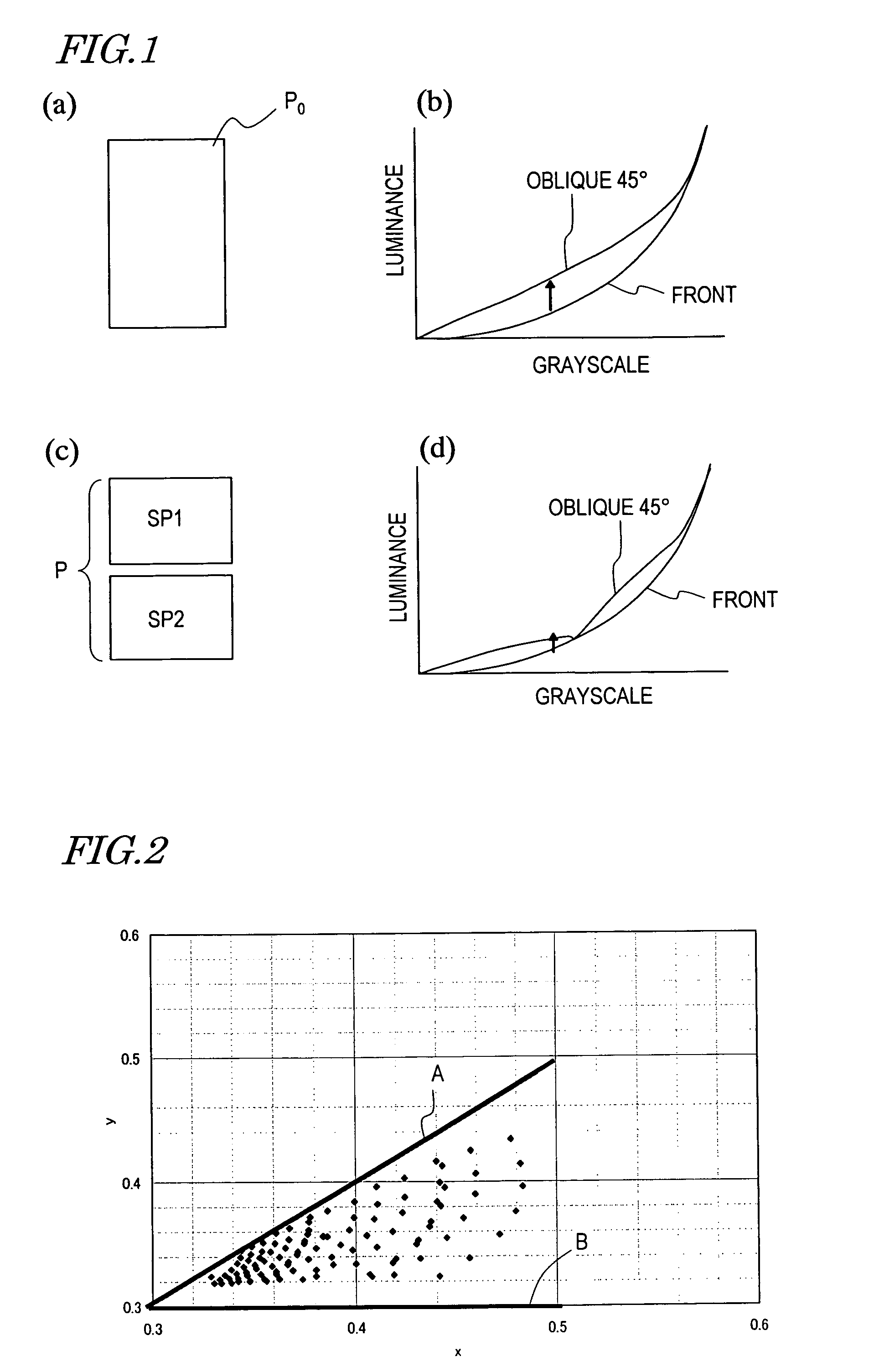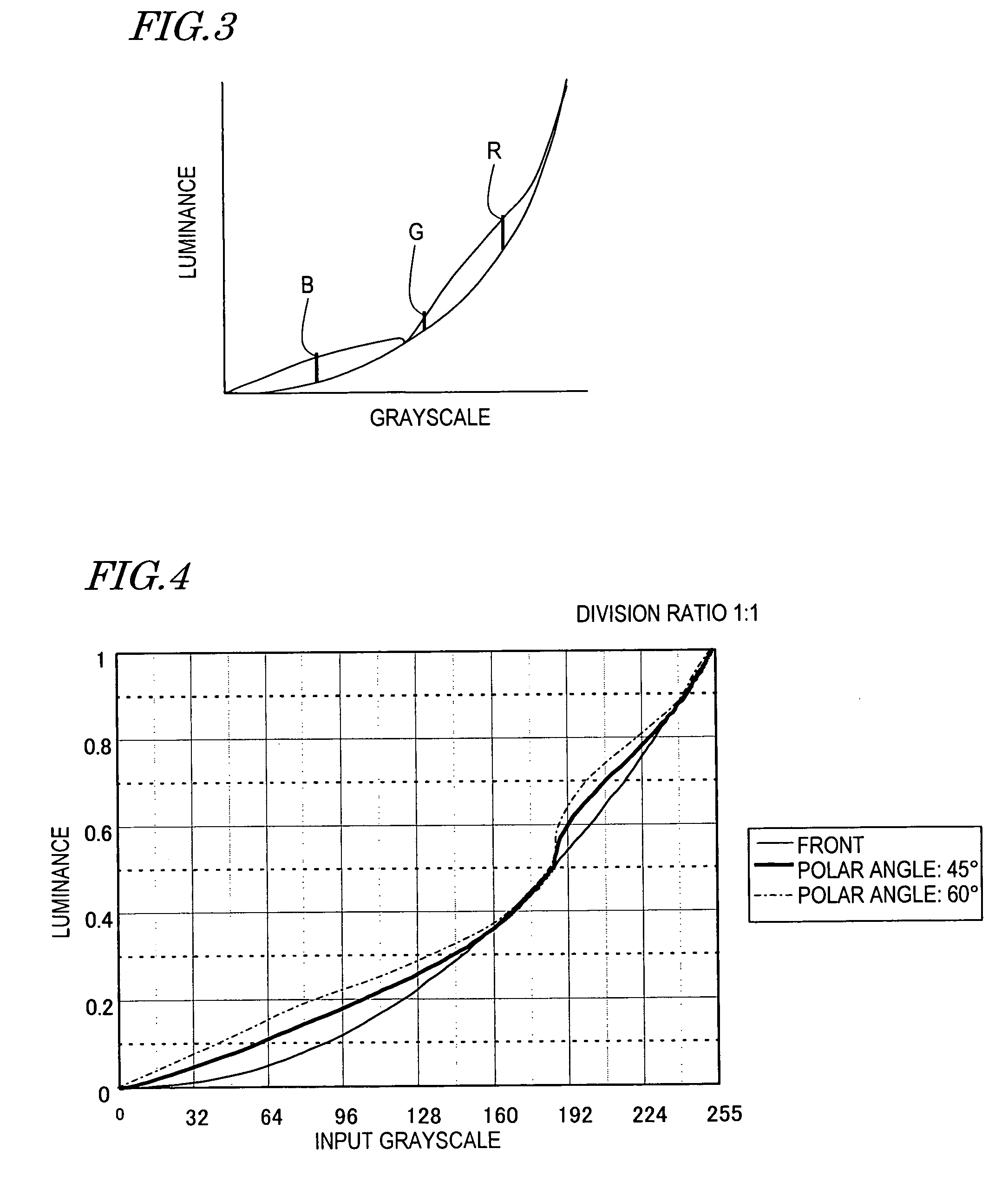Liquid crystal display device
a liquid crystal display and display angle technology, applied in the field of liquid crystal display devices, can solve the problems of display quality varies, grayscale characteristic ( characteristic) is dependent on viewing angle, etc., and achieve the effect of reducing the dependence of viewing angle on grayscale characteristic (color reproducibility) of the liquid crystal display devi
- Summary
- Abstract
- Description
- Claims
- Application Information
AI Technical Summary
Benefits of technology
Problems solved by technology
Method used
Image
Examples
Embodiment Construction
[0041]The present inventors made studies on the improvement of the grayscale characteristic (color reproducibility) while the number of sub-pixels into which one pixel is divided is kept relatively small, e.g., while the number of sub-pixels is the minimum number of 2.
[0042]For the color reproducibility of a display device, memory colors are considered important. In most cases, an image displayed on a display device cannot be directly compared with a subject of display. Therefore, the relationship between the displayed image and the image memorized by the observer is important. For a display device used for TVs, the color of the skin of humans (hereinafter, referred to as the “skin color”) is considered especially important among memory colors (see, for example, Non-patent Document 1).
[0043]FIG. 2 shows a skin color distribution of Japanese men and women in the CIE color system, which is converted from the Muncell color system shown on page 1303 of Non-Patent Document 1. As understo...
PUM
 Login to View More
Login to View More Abstract
Description
Claims
Application Information
 Login to View More
Login to View More - R&D
- Intellectual Property
- Life Sciences
- Materials
- Tech Scout
- Unparalleled Data Quality
- Higher Quality Content
- 60% Fewer Hallucinations
Browse by: Latest US Patents, China's latest patents, Technical Efficacy Thesaurus, Application Domain, Technology Topic, Popular Technical Reports.
© 2025 PatSnap. All rights reserved.Legal|Privacy policy|Modern Slavery Act Transparency Statement|Sitemap|About US| Contact US: help@patsnap.com



